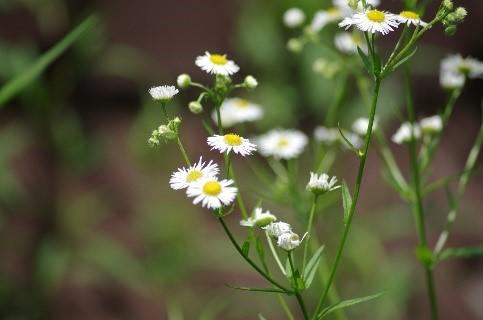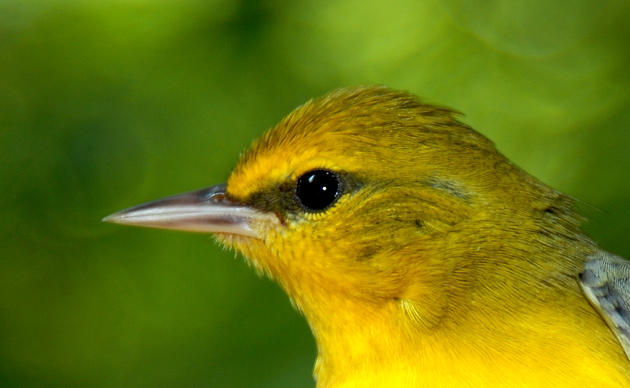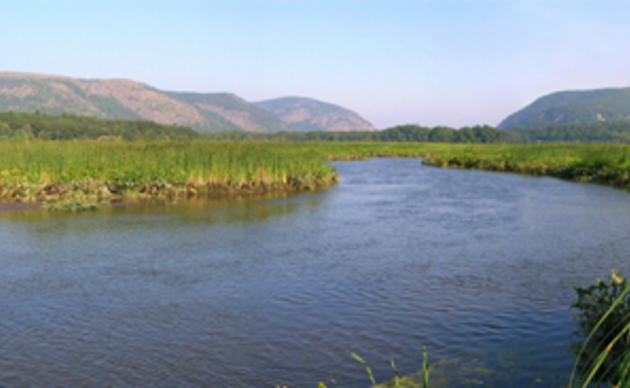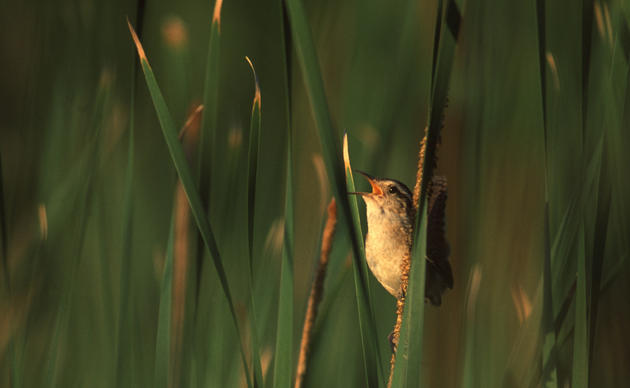Through my newfound love of birds, I have also found an appreciation for the many habitat projects that Audubon New York conducts in the Hudson Valley, as well as the stewardship tasks my position at Constitution Marsh requires of me. Through the daily hard work, I’ve realized that building a safe space for birds is not something that can be checked off on a to-do list. It requires continuous labor. It might seem arduous, but any effort to advance bird conservation -- including that by the individual at home -- is critical today as many species are declining.
The first major stewardship project I participated in was installing a deer fence at Rheinstrom Hill Audubon Center and Sanctuary. White-tailed deer are overpopulated in the New York State, which results in over-browsing in forests. A deer fence enclosure stops deer from entering a reclaimed area and allows new growth to sprout. During a recent bird survey, I did notice an increase in bird activity near this enclosed area. Chestnut-sided Warblers, Wood Thrush, and Veeries have swarmed the bounded space more so than the surrounding wooded area. It filled me with a sense of hope and eagerness to see what change could occur down the line if just a month's time could harbor such a difference.
Invasive species control and growing native plants are paramount in creating a safe haven for birds. At Constitution Marsh Audubon Center and Sanctuary we are in the process of ridding the marshland of Phragmites australis, an invasive reed that blocks sunlight and nutrients from other plants, resulting in a monoculture. The single-species area that the monoculture of Phragmites builds makes it so the wetland plants, which marsh birds eat and build their nests with, can’t grow. Removing invasive species and replacing them with native ones helps protect the balance of nature and stabilize bird populations. I have not been involved in this particular project yet, but when I’ve kayaked into the marsh I’ve noticed less bird activity around the patches of Phragmites than in the surrounding area.
One of the most important parts of my role as a naturalist intern is to educate others on the need to protect birds. Through school group visits, public programming, and pop-up activities, I have gained the voice of an environmentalist and spread the word on how to create bird-friendly communities.
Here are some steps YOU can take to help birds:
1. Plant native plants
Many invasive species originally started out as garden plants that escaped. When designing your landscape, choose native plants, shrubs, and trees in order to provide food and shelter for birds. Also try to remove or manage invasive species to the best of your ability. Native plants can increase biodiversity and create a balanced ecosystem full of all kinds of life. For more information on finding native plants in your area, visit Audubon's Native Plants Database.

2. Provide fresh water
It’s difficult for a bird to find clean water in areas that have been developed or where habitat has been fragmented. Providing a birdbath with shallow edges or a small pond can help birds stay hydrated. Just remember to clean it regularly so no fungus or bacteria builds up that might harm whomever is drinking the water.
3. Keep cats indoors
The estimated 50 million feral cats in the United States have a negative effect on threatened bird populations. Letting domesticated cats outside, unsupervised, will add to the damage done by feral cats. I used to let my cat freely enjoy the outdoors. When I became aware of the environmental impact of letting her into the wild, I decided to keep her inside. She has been perfectly content as an indoor cat ever since and I’m sure your cat will be too. An added bonus to keeping cats indoors is that it will live longer and have reduced risk of parasites, fleas, and ticks!
4. Place decals on windows
An estimated 1 billion birds die each year from crashing into windows. Decorate windows to make them less reflective and more visible to birds.
5. Install a bird feeder in the winter (and take it down in the spring)
It’s tough for wintering birds to find food during the colder months. Install a bird feeder in a spot sheltered from cold winds. When the days start to warm up and plants start growing, take down the bird feeder so that birds will go to native plants for food. This will ensure a healthy diet for birds while also helping pollinate and spread the seeds of the native plants.
6. Spread the word!
Tell your friends how important having a bird-friendly community is. Take community action to plant native plants and remove invasive species in local parks and green areas.




